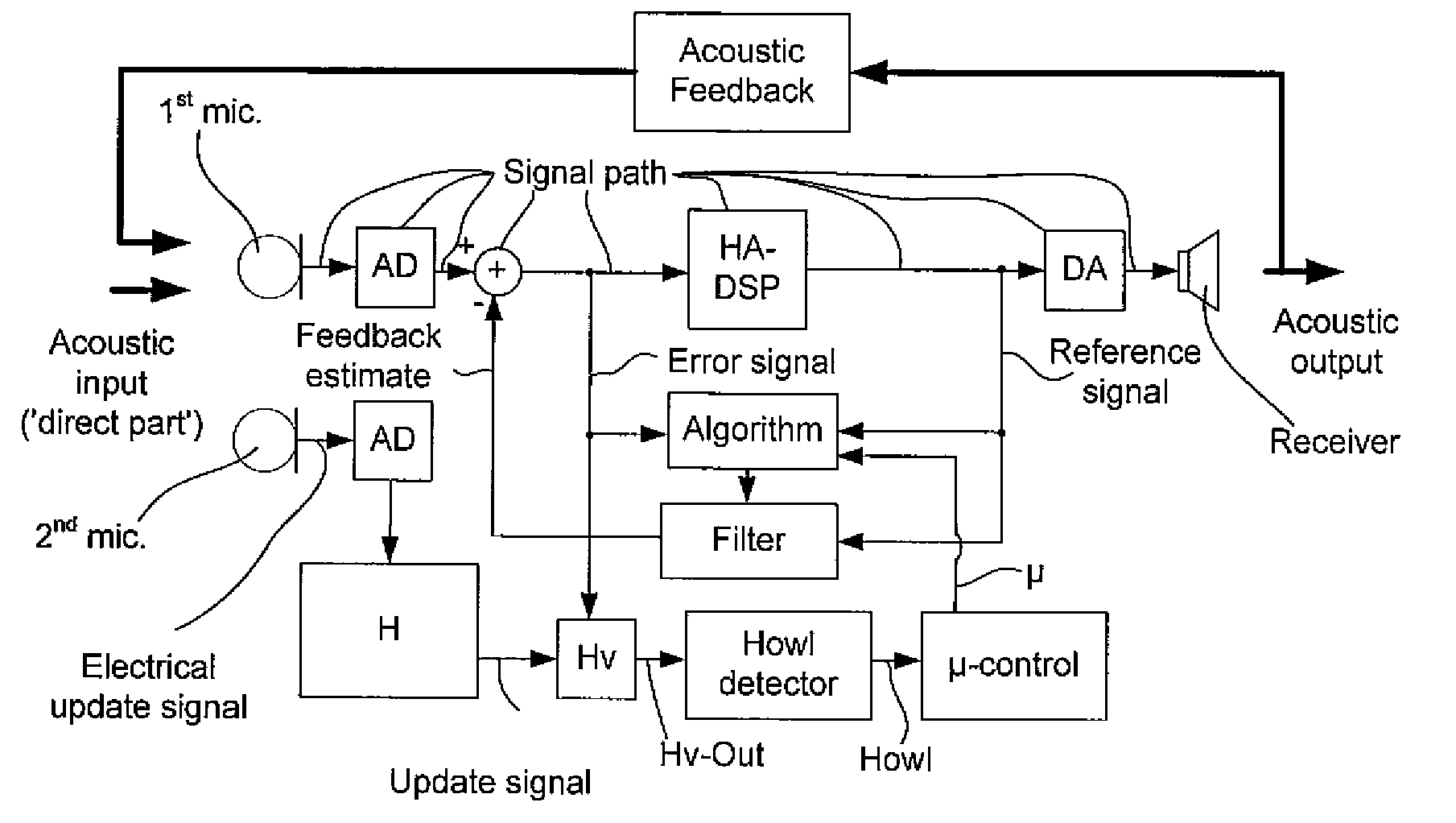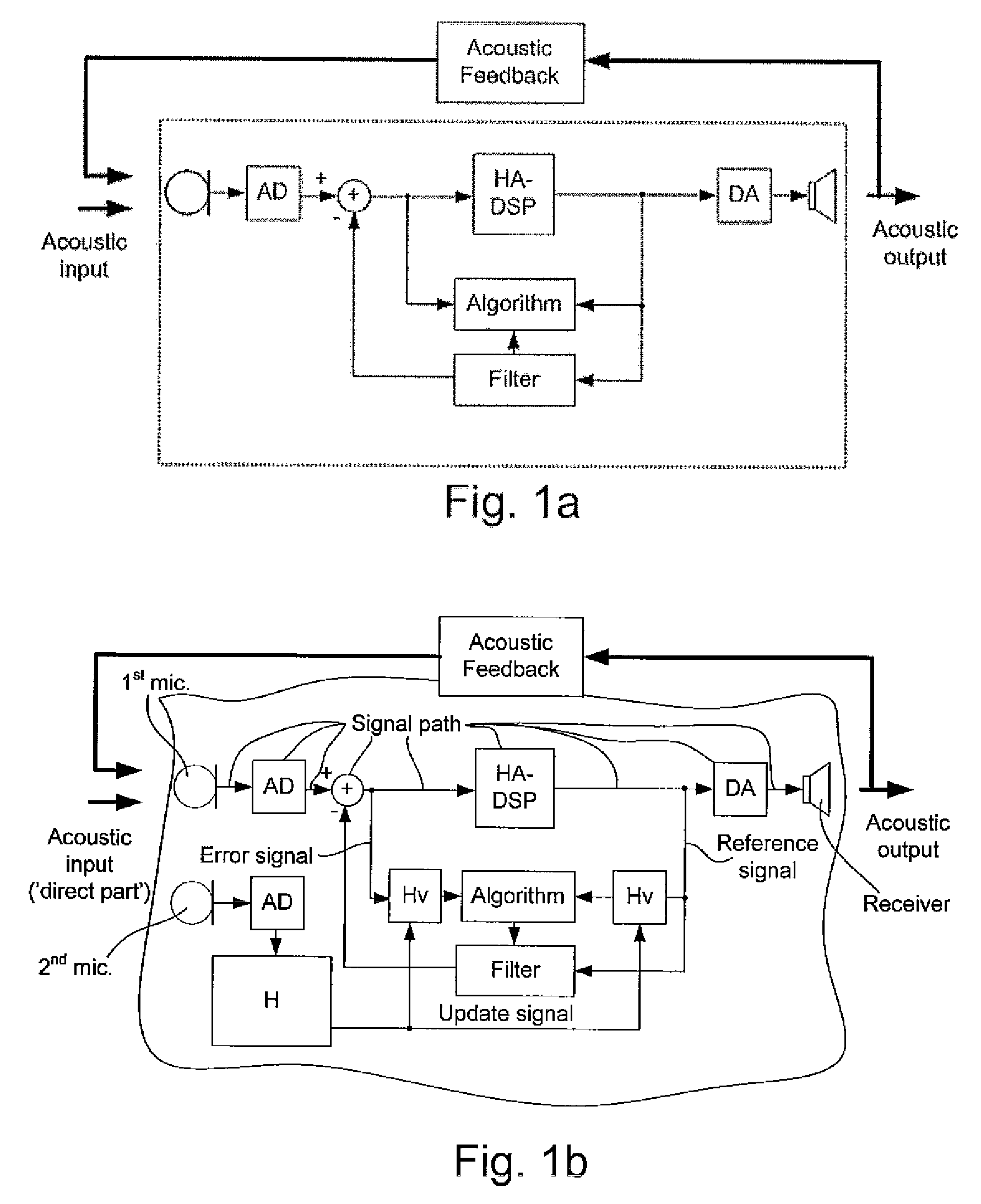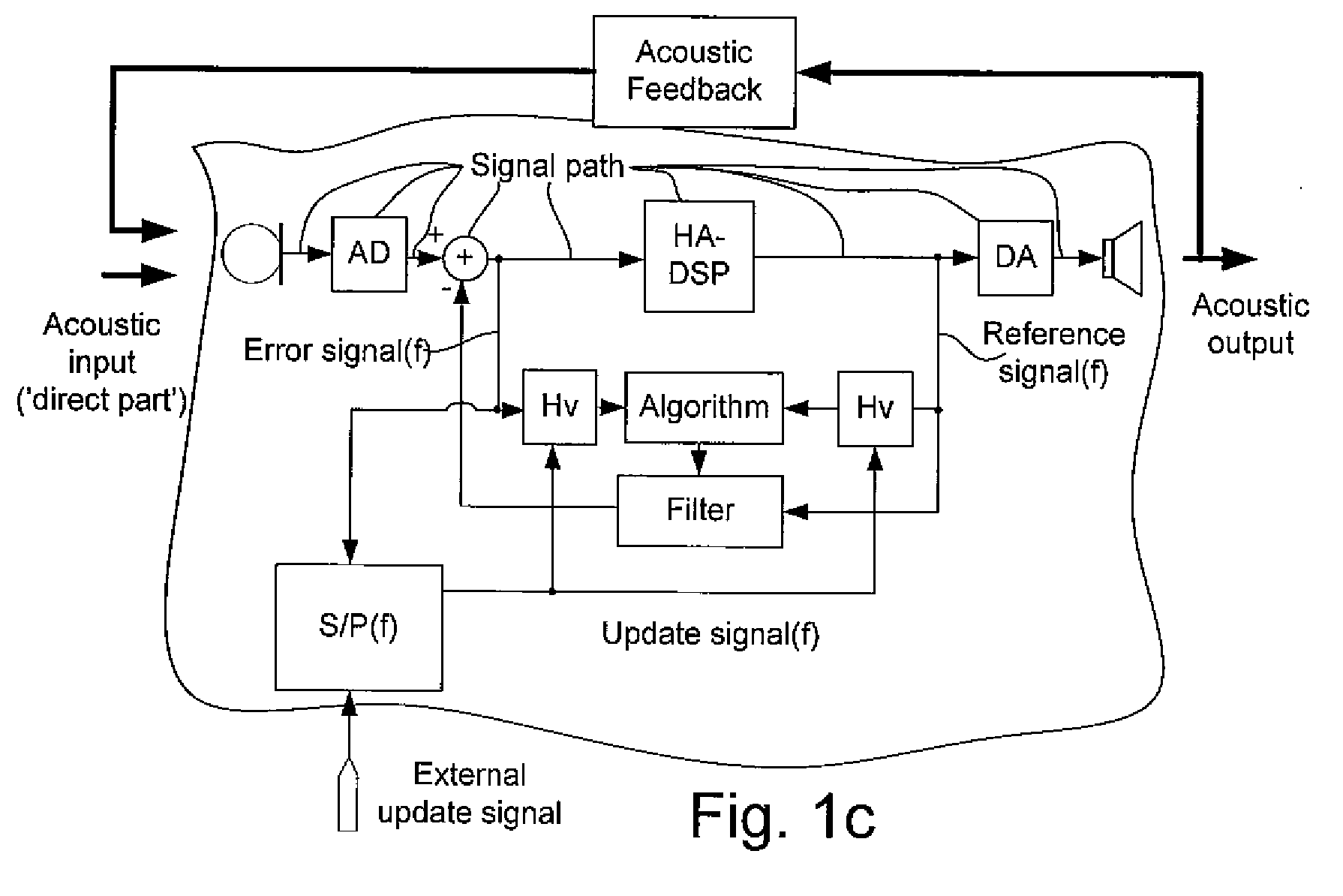Listening system with an improved feedback cancellation system, a method and use
- Summary
- Abstract
- Description
- Claims
- Application Information
AI Technical Summary
Benefits of technology
Problems solved by technology
Method used
Image
Examples
Embodiment Construction
[0076]FIG. 1a illustrates the basic components of a hearing instrument, the forward path, an (unintentional) acoustical feedback path and an electrical feedback cancellation path for reducing or cancelling acoustic feedback. The forward path comprises an input transducer for receiving an acoustic input from the environment, an analogue to digital converter (AD-converter), a digital signal processing part HA-DSP for adapting the signal to the needs of a wearer of the hearing aid, a digital to analogue converter (DA-converter) and an output transducer for generating an acoustic output to the wearer of the hearing aid. An (external, unintentional) Acoustical Feedback path from the output transducer to the input transducer is indicated. The electrical feedback cancellation path comprises an adaptive filter (Algorithm, Filter), whose filtering function (Filter) is controlled by a prediction error algorithm (Algorithm), e.g. an LMS (Least Means Squared) algorithm, in order to predict and ...
PUM
 Login to View More
Login to View More Abstract
Description
Claims
Application Information
 Login to View More
Login to View More - R&D
- Intellectual Property
- Life Sciences
- Materials
- Tech Scout
- Unparalleled Data Quality
- Higher Quality Content
- 60% Fewer Hallucinations
Browse by: Latest US Patents, China's latest patents, Technical Efficacy Thesaurus, Application Domain, Technology Topic, Popular Technical Reports.
© 2025 PatSnap. All rights reserved.Legal|Privacy policy|Modern Slavery Act Transparency Statement|Sitemap|About US| Contact US: help@patsnap.com



